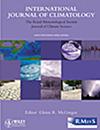In the context of global warming, the rise in extreme precipitation events in high-altitude headwater areas has introduced greater hydrological uncertainty. However, the limited understanding of the physical mechanisms driving extreme precipitation in these areas hinders efforts to mitigate the potential rise in future precipitation risks. This study analysed the extreme precipitation events in the headwater area of the Yellow River (HAYR) from May to September each year from 2015 to 2020 using satellite-based data from Dual-frequency Precipitation Radar (DPR) on the Global Precipitation Measurement (GPM) Core Observatory and Integrated Multi-satellite Retrievals for GPM (IMERG). The results show that stratiform precipitation (SP) determines the spatial extent of extreme precipitation events, while convective precipitation (CP) largely affects the rainfall intensity. Statistical analysis from different extreme precipitation events indicates that the rain rate of CP is 2 to 3 times higher than that of SP, thus zones of intense precipitation in the study area are normally dominated by CP. Vertically, the topographic lifting in complex mountainous regions exerts opposite effects on the precipitation rates of SP and CP, weakening the precipitation intensity of SP while enhancing that of CP. The peak precipitation rate in the midstream and downstream regions is observed at approximately 5 km, whereas the upstream region displays a distinctive double-peaked distribution, with one peak at 8.5 km and another near the surface. This study provides a better understanding of the interior structure evolution process of plateau precipitation, as well as the associated microphysical properties, and highlights some insights to improve microphysical parameterization in the future model developments.


